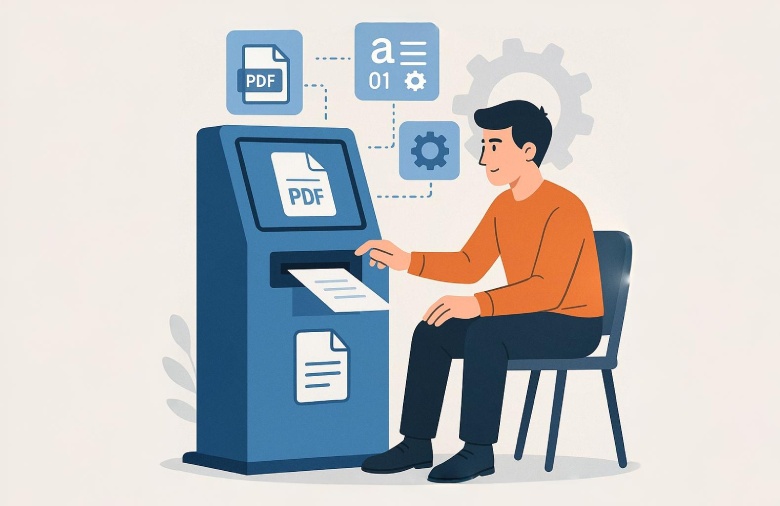
How ADP’s Learning Management System Can Simplify Employee Training
As the pace of business picks up, companies are always looking for new methods to improve employee training. One of the tools that has received the most attention is the Learning Management System (LMS). Such technology can simplify the training process, enhance employee engagement, and consequently maximize productivity. So, how exactly do LMSs make employee training easier?
What is LMS: An Introductory Guide
But before discussing the advantages, it is important to learn what an LMS is. In its simplest form, an LMS is a software application for administering, documenting, tracking, reporting, and delivering training programs. It usually has features like content creation, progress tracking, and performance assessment. This multi-layered approach of an ADP learning management system, in particular, ensures that your employees get the same high-quality training wherever they are.
Simplified Learning Processes
One of the biggest advantages of LMS is the effective use of it. Most traditional training methods take time—a lot of time—and they come at the cost of productivity. On the other hand, LMS provides you with a flexible schedule. Employees have the convenience of accessing the training materials without hindering their workflow. This ensures that training is embedded in the workday and not an isolated and time-consuming event.
Enhanced Employee Engagement
Getting employees motivated to look at the training content is always a challenge. On the other hand, an LMS includes interactive features like quizzes, videos, and discussion forums, features that make learning fun and interesting. When training is made into an interactive experience, employees have a greater chance of retaining the information and putting it into practice in their roles.
Regular Training Standardization
Using a well-structured training process is crucial to maintain a quality standard level of education for every employee. A standard learning management system (LMS) delivers the same content to employees, thus reducing the variation of information. Remote training sessions create an equal footing for learning as the training content is the same for every employee, regardless of whether they are at the headquarters or working from a remote location.
Tracking and Reporting Feature
It is essential to track progress to know if training programs are effective. A Learning Management System has in-depth analytics and reporting capabilities. This helps managers track employee progress and determine what areas need improvement so that they can customize training as needed. But it gives enterprises the means to double down on the best strategies they have for training their workforces—constantly improving in a continuous, data-driven way.
Cost-Effectiveness
Deploying LMS also translates as money saved. Traditional training requires travel, materials, and renting venues, amongst others. Moving to a digital platform enables companies to either cut down such costs or do away with them completely. Moreover, the scalability associated with an LMS makes it possible for businesses to train massive volumes of employees without additional costs.
Flexibility and Accessibility
Access is also another great benefit of an LMS. The training materials can be accessed by employees from different devices, be it laptops, tablets, or smartphones. Such flexibility also means that learning can happen anytime, anywhere to suit the requirements of the modern workforce. Additionally, it caters to different learning styles, offering visual, auditory, and kinesthetic activities.
Creating an Environment for Continuous Learning
Work cultures have become way too fast now. Of course, you have to learn and relearn every day. LMS can support this need by providing opportunities to learn continuously. It allows employees to upgrade their skills and knowledge continuously and stay ahead in their jobs. Encouraging such a culture of learning is not just beneficial for the employees but also promotes organizational growth.
Tailoring and Customization
Organizations have different needs; an LMS can help you meet particular needs. Customized programs can be streamlined to align with the organization, its culture, and its goals. Personalization goes down to the individual employee's learning paths based on their key areas of improvement or development.
Overcoming Common Challenges
Despite the obvious advantages, implementing an LMS can be difficult. Organizations may encounter resistance to change or face technical challenges. Nevertheless, these challenges can be managed by anticipating them and with the right support. While incorporating new technology, you should focus on bringing the employees on board by actively involving them in the transition process and adequately training them on the system.
Conclusion
A Learning Management System has many advantages that make it easier for you to train your employees. The benefits are huge, from process automation and better engagement to continuous training and cost reduction. Adoption of the LMS can be extremely helpful in transforming a skilled and flexible workforce as companies evolve continuously. With this technology, organizations can adapt more easily to the evolving needs of the workplace.

Why Most Startups Don’t Fail Because of the Product








